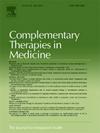异体造血干细胞移植(HSCT)受者家庭照顾者瑜伽减压干预的可接受性:一项混合方法研究
IF 3.5
3区 医学
Q1 INTEGRATIVE & COMPLEMENTARY MEDICINE
引用次数: 0
摘要
目的:本研究采用并行三角形混合方法设计来评估基于瑜伽的减压干预在造血干细胞移植(HSCT)受者的家庭照顾者中的可接受性。资料来源:本研究为随机对照试验的一部分。在招募的50名护理人员中,我们分析了分配到干预组的25名护理人员的数据。参与者被要求在六周内每天练习20分钟,并将其记录在练习日记中。在基线和第6周进行调查,并在第2周、第4周和第6周进行访谈。定量数据的非参数统计和定性数据的专题分析并行比较。作为三角测量的一部分,我们检查了主题分析与干预实践总分钟数之间的关系。结论:专题分析揭示了参与者在实施干预时所经历的挑战和益处,照顾者负担是实施干预的主要障碍。随着时间的推移,认为干预有助于他们放松和睡眠的参与者数量有所增加。定量分析证实了通过测量睡眠障碍和健康行为进行干预的好处。在主题分析中确定的照顾者负担和干预益处的感知与总练习时间有关。研究人员和临床医生在为HSCT护理人员量身定制减压干预方案时,可能会参考当前的研究结果。在实施此类计划时,应考虑沿HSCT轨迹的照顾者负担的变化。本文章由计算机程序翻译,如有差异,请以英文原文为准。
Acceptability of a yoga-based stress reduction intervention in family caregivers of allogeneic hematopoietic stem cell transplant (HSCT) recipients: A mixed-methods study
Objectives
This study used a concurrent triangulation mixed-methods design to assess the acceptability of a yoga-based stress reduction intervention in family caregivers of hematopoietic stem cell transplant (HSCT) recipients.
Data sources
This study was a part of a randomized controlled trial. Of the 50 caregivers recruited, we analyzed data from 25 caregivers assigned to the intervention group. Participants were asked to practice the intervention 20 min per day for six weeks and record it in a practice diary. Surveys were administered at baseline and Week 6, and interviews were conducted at Week 2, Week 4, and Week 6. Non-parametric statistics on quantitative data and thematic analysis on qualitative data were compared in parallel. As part of triangulation, we examined the association between thematic analysis and total minutes of the intervention practice.
Conclusion
Thematic analysis revealed the challenges and benefits participants experienced while practicing the intervention, with caregiver burden as a main barrier to practice. The number of participants perceiving that the intervention helps them relax and sleep increased over time. The quantitative analysis validated the benefits of practicing the intervention with the measures of sleep disturbance and health behaviors. Perceptions of caregiver burden and benefits of the intervention identified in thematic analysis were associated with total practice minutes. Researchers and clinicians may refer to the current findings when developing stress reduction intervention programs tailored for HSCT caregivers. Changes in caregiver burden along the HSCT trajectory should be considered when implementing such programs.
求助全文
通过发布文献求助,成功后即可免费获取论文全文。
去求助
来源期刊

Complementary therapies in medicine
医学-全科医学与补充医学
CiteScore
8.60
自引率
2.80%
发文量
101
审稿时长
112 days
期刊介绍:
Complementary Therapies in Medicine is an international, peer-reviewed journal that has considerable appeal to anyone who seeks objective and critical information on complementary therapies or who wishes to deepen their understanding of these approaches. It will be of particular interest to healthcare practitioners including family practitioners, complementary therapists, nurses, and physiotherapists; to academics including social scientists and CAM researchers; to healthcare managers; and to patients. Complementary Therapies in Medicine aims to publish valid, relevant and rigorous research and serious discussion articles with the main purpose of improving healthcare.
 求助内容:
求助内容: 应助结果提醒方式:
应助结果提醒方式:


